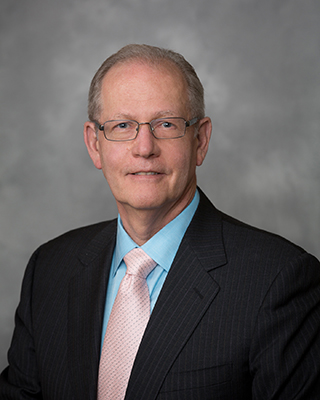Dear Colleagues,
 In 2015 we were all very fortunate to have Russell N. Van Gelder, MD, PhD, as our president. During a time of great changes in health care, it was wonderful to have as president not only someone who understood the policy issues facing us all, but someone who could (as a National Eye Institute grant-supported scientist and a renowned teacher) also bring us back to our professional roots. His letter beginning on page 5 nicely highlights many of our Academy’s key successes last year. I’m going to focus upon just three elements: (1) the demise of the SGR and its implications, (2) the IRIS® Registry, and (3) the patient-physician relationship.
In 2015 we were all very fortunate to have Russell N. Van Gelder, MD, PhD, as our president. During a time of great changes in health care, it was wonderful to have as president not only someone who understood the policy issues facing us all, but someone who could (as a National Eye Institute grant-supported scientist and a renowned teacher) also bring us back to our professional roots. His letter beginning on page 5 nicely highlights many of our Academy’s key successes last year. I’m going to focus upon just three elements: (1) the demise of the SGR and its implications, (2) the IRIS® Registry, and (3) the patient-physician relationship.
Demise of the SGR
For well over a decade, physicians fought to overthrow the sustainable growth rate (SGR) methodology to determining payment under Medicare. As we all remember, numerous legislative "patches" were necessary for Congress to defer a "cliff" in payment wherein payment would fall by 20 percent or more. The Medicare Access and CHIP Reauthorization Act of 2015 (MACRA) not only fixed that but it gave physicians some relief from byzantine and conflicting regulations involving the Physician Quality Reporting System (PQRS), Value-based Modifier (VBM), and Meaningful Use (MU) systems. And it also deferred an impending process which would have eliminated global fee periods and resulted in massive decreases to procedure payments. The SGR repeal was a victory and good news.
The other news was that under MACRA two new payment systems arose—the Merit-based Incentive Payment System (MIPS) and Alternative Payment Models (APMs). In essence, each American physician will have to choose one of these two pathways, and their effects will be first felt in 2017 and then rapidly phase in.
Unfortunately, the regulations are still being written, so final details are uncertain. However, two things are certain. First, this will be incredibly important as it determines the basis for payment. And second, it will be very complex and somewhat fluid. On the balance, we came out ahead on MACRA, but I urge all Academy members to spend time becoming familiar with the paths and choices ahead. Come to Mid-Year Forum 2016 in April, pay close attention to practice management updates from the American Academy of Ophthalmic Executives (AAOE), read the weekly Washington Report Express electronic newsletter, and attend symposia at AAO 2016 in Chicago. One of our Academy’s highest priorities this year is trying to ensure that our membership is informed and prepared.
IRIS Registry
The IRIS Registry is exceeding all our expectations. In less than two years it contains data on over 70 million patient visits. By the end of 2016 it will be well over 100 million visits. The IRIS Registry is already not just the largest ophthalmic registry in the United States, not just the largest ophthalmic registry in the world, but the largest specialty-specific registry in all of medicine anywhere. It’s larger than the ophthalmology Medicare database! Ophthalmologists are using it to improve care. Investigators are making novel, population-based observations and adding them to our scientific literature. And this year it is projected to save you and your colleagues a collective $250-300 million dollars in avoided penalties! Not bad for something the Academy self-funded and provides at no charge. And without getting into the complex details, it may also be the ONLY way for most members to avoid some payment penalties in the future.
The Patient-Physician Relationship
The patient-physician relationship is at the core of why we all chose ophthalmology as a profession. If we didn’t value these sustained relationships, we would have become radiologists or pathologists. The sanctity of this relationship has been under fire from a number of sources—intrusive regulations, massive system integration, and electronic health records to name just a few. I suspect that all of us search for ways to meet both our expectations and our patients’ expectations for an optimal experience of care.
As Dr. Van Gelder mentions in his letter on page 6, we are re-examining the Academy’s suite of programs and products with this focus—the patient—front and center. Protecting Sight. Empowering Lives. Not just a tagline but a mantra to guide what we do. And in so doing, we must recognize the heterogeneity of the ophthalmic community. A large percentage of ophthalmologists practice in groups of fewer than four physicians—or as solo practitioners. The Academy is committed to focusing on the needs of this group of members—as well as on the slightly different needs of larger integrated practices.
It will always be a great privilege and honor to serve our profession, the Academy, and the ophthalmologic community. I pledge that the Academy, its staff, its resources, and its volunteers will do our collective best to provide you with the educational tools, advocacy, professional resources, and leadership we all need to fulfill our responsibilities to our patients, our families, our colleagues, and our communities.
Thank you,
David W. Parke II, MD
Chief Executive Officer
American Academy of Ophthalmology